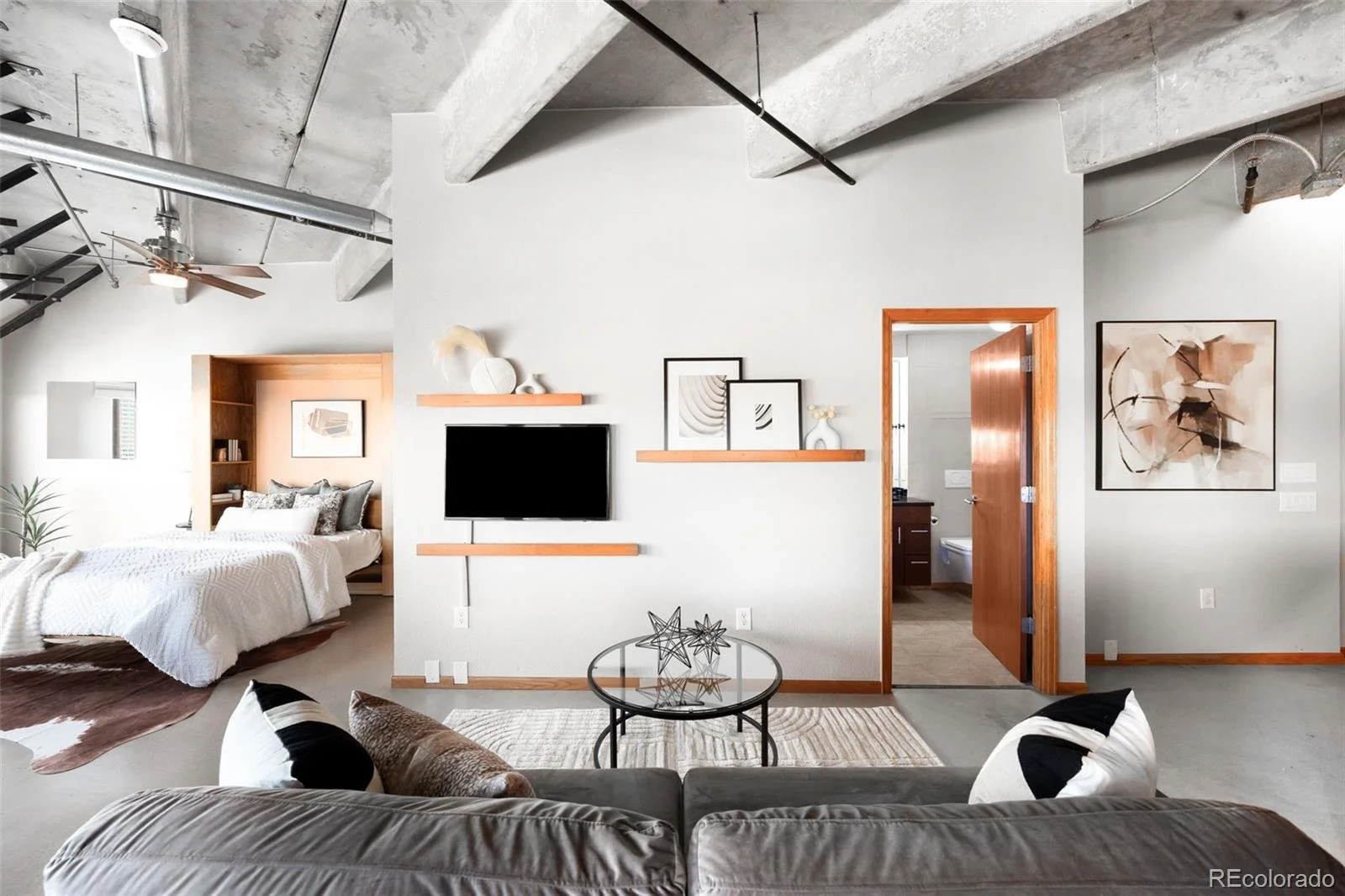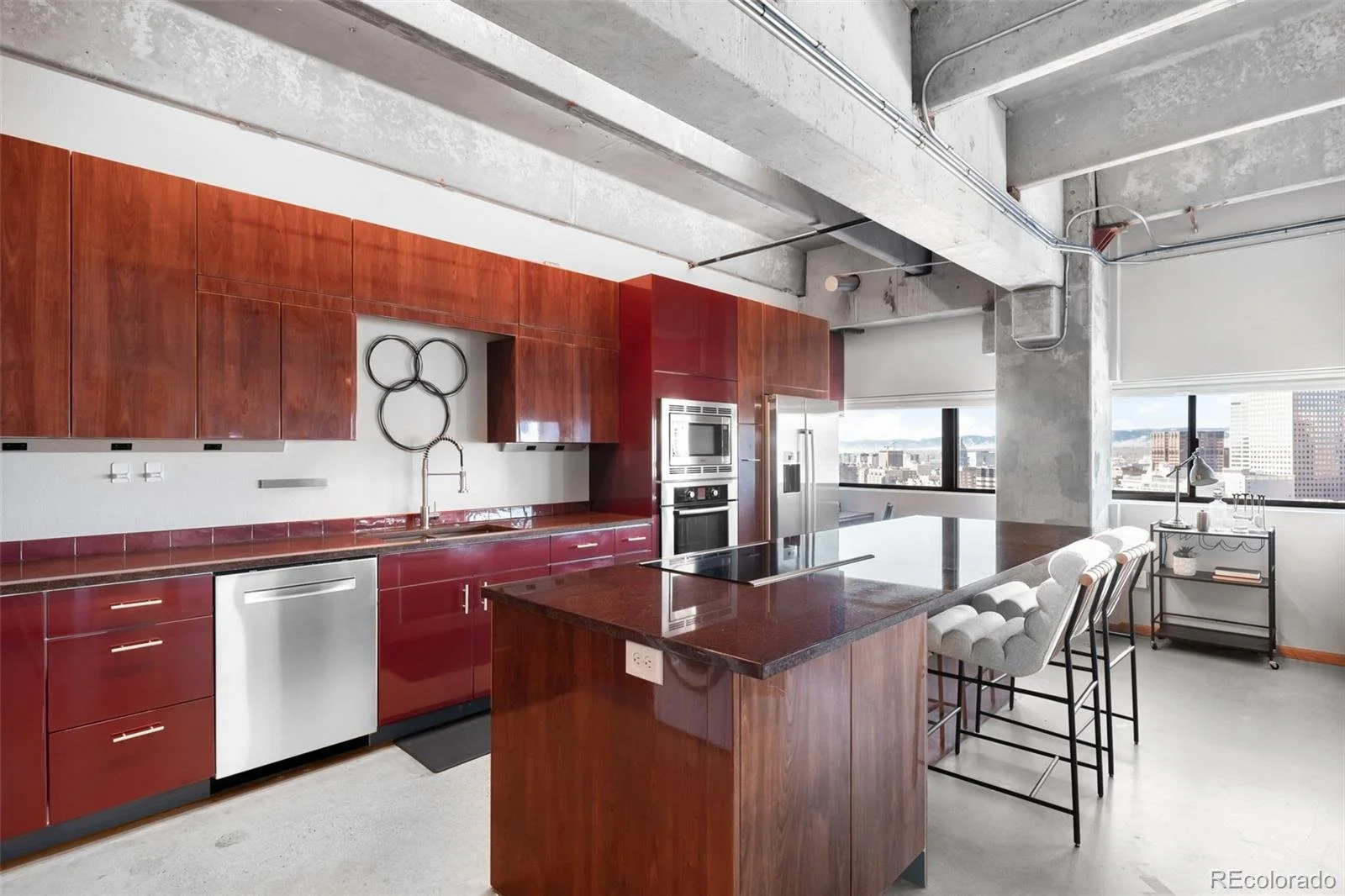Wait until you see the view! Discover elevated urban living in this stunning spacious studio condo at 100 Park Avenue West
Located in the heart of the vibrant Uptown neighborhood, this contemporary home offers unparalleled convenience and style, with urban living at its finest. Step inside to a bright, open floor plan featuring floor-to-ceiling windows that fill the space with natural light and frame ‘million-dollar’ views of Denver’s skyline and front range. The sleek oversized kitchen has granite countertops, stainless steel appliances, and generous cabinet space, making it a chef's delight. In unit laundry, large closets (with elfa system installed), TV and 2 parking spaces complete this fabulous 760 square feet condo. It is maximized for functionality and feels very spacious. Residents of 100 Park Avenue West enjoy an impressive array of amenities, including a seasonal pool, year-round hot tub, state-of-the-art fitness center, and a dedicated dog park with a convenient wash station. The community also offers a business center, secure bike storage, and a community garden.Two reserved parking spots adds to the convenience. Situated just steps from renowned restaurants like D Bar and Coperta, as well as shopping and nightlife, this location is a dream for city dwellers. Proximity to downtown, RiNo, Capitol Hill, and nearby hospitals ensures easy access to work and play. Don't miss the opportunity to experience luxurious city living in this prime Uptown location. Motivated seller - bring us an offer! Use Three Point Mortgage to obtain financing on the unit and receive up to $8,013 in Lender Incentives to go towards rate buy-down or closing costs.
Listed by Martin Percival for West + Main Homes. Please contact Martin for current pricing + availability.












